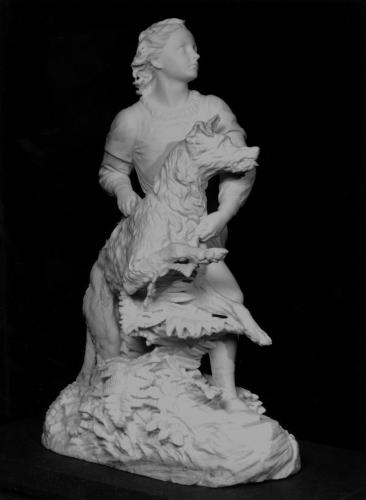Alexander Munro
Bio
Son of a stonemason, his talents were supported by financial assistance from his father’s employer, the Duchess of Sutherland. From 1842 he assisted and trained in the Edinburgh studio of the sculptor Alexander Handyside Ritchie. He came to London in 1848 to study sculpture under Charles Barry. At this time he also worked as a mason on the new Palace of Westminster. He exhibited at the Royal Academy from 1849–70, and in the Great Exhibition of 1851.
Munro was a close associate of Thomas Woolner, the only sculptor to be a member of the original Pre-Raphaelite Brotherhood. He was also friendly with Dante Gabriel Rossetti. Munro is significant in the history of the movement since he is often cited as a contributor to the controversy over Pre-Raphaelitism in 1850, when he “leaked” the information that the group formed a secret brotherhood.
In 1854, with Thomas Woolner, Dante Gabriel Rossetti, Ford Madox Brown, Edward Burne-Jones, Lowes Cato Dickinson and John Ruskin, Munro began teaching at the newly established Working Men’s College.
Munro’s sculptures were noted for their formal simplicity. His most famous work was Paolo and Francesca, which was exhibited at the 1851 exhibition. It depicted the lovers as languid, dreamy and genteel, contributing to the popular image of the Pre-Raphaelite movement. The final marble version is in Birmingham Museum and Art Gallery. The original plaster version of the sculpture is currently on display in Wallington Hall, which also contains a portrait relief bust of Pauline, Lady Trevelyan created by Munro.
He later created public sculptures in Berkeley Square and Hyde Park Corner, as well as several memorial statues. Six of the seventeen statues of scientists in the Oxford University Museum of Natural History are his work, all produced circa 1860.
Munro suffered from ill health, and was struck down by a lung disease which slowly undermined his constitution. In his last years he and his wife lived in Cannes, France for his health, and this is where he died on New Year’s Day 1871.

